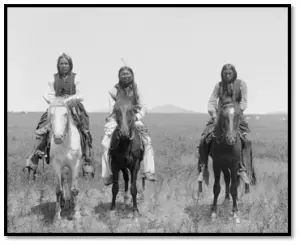The Comanche’s kept up a vague association with the Europeans and later the Americans endeavoring to colonize their domain. They were esteemed as exchanging accomplices, however, they were additionally dreaded for their raids. Correspondingly, the Comanche Tribe Facts were at war at constant rates with other Native American tribes living in the Southern Great Plains, leaving open opportunities for political moving by the European colonial dominance and the United States. At one point, Sam Houston, president of the recently made Republic of Texas, almost won in achieving a peace arrangement with the Comanche’s, yet his endeavors were frustrated when the Texas council declined to make an official limit amongst Texas and the Comancheria.

While the Comanche’s figured out how to keep up their freedom and even expand their region, by the mid-nineteenth century, they confronted obliteration on account of a flood of plagues presented by white pioneers. Breakouts of smallpox (1817, 1848) and cholera (1849) took a noteworthy toll on the Comanche’s, whose populace dropped from an expected 20,000 in mid-century to only a couple of thousand by the 1870s.
Comanche Tribe Facts: Comanche Government
Endeavors to move the Comanche into reservations started in the late 1860s with the Treaty of Medicine Lodge (1867), which offered them places of worship, schools, and annuities consequently for a boundless tract of area totaling more than 60,000 square miles (160,000 km). The administration guaranteed to stop the wild buffalo hunters, who were pulverizing the considerable groups of the Plains, given that the Comanche, alongside the Apaches, Kiowas, Cheyennes, and Arapahos, moved to a reservation totaling under 5,000 square miles (13,000 km) of the area. However, the government failed to keep the butchering of the herds, which incited the Comanche under Isa-
The administration guaranteed to stop the wild buffalo hunters, who were pulverizing the considerable groups of the Plains, given that the Comanche, alongside the Apaches, Kiowas, Cheyennes, and Arapahos, moved to a reservation totaling under 5,000 square miles (13,000 km) of the area. However, the government failed to keep the butchering of the herds, which incited the Comanche under Isa-
However, the government failed to keep the butchering of the herds, which incited the Comanche under Isa-Tai (White Eagle) to assault a gathering of hunters in the Texas Panhandle in the Second Battle of Adobe Walls (1874). The assault was a catastrophe for the Comanche and the armed force was brought in to drive all the rest of the Comanche in the region into the reservation. Inside only ten years, the bison was very nearly eradication, adequately finishing the Comanche lifestyle as seekers.
In 1892 the government finalized the Jerome Agreement, in the middle of them and the Comanche Tribe Facts, Kiowas, and Apaches, further decreasing their reservation to 480,000 sections of land (1,940 km) at a cost of $1.25 per section of land ($308.88/km), with an allocation of 160 sections of land (0.6 km) per individual per tribe to be held in trust. New allocations were made in 1906 to all youngsters conceived after the Jerome Agreement, and the rest of the area was opened to white settlement. With this new plan, the period of the Comanche reservation reached a sudden end.
The Comanche’s had a fair share of success and defeats in the course of their existence in the Southern Great Plains. They became one of the modernized tribes in the region and even made trades and speak in diplomatic tones. But their true natures would be the true culprits of their demise, as the Americans and the Europeans would neglect them for their rights and would still treat them as savages. Also, search for the way of Living Comanche.
comanche traditions, Comanche culture, Comanche weapons, Comanche history, Comanche warriors, what does Comanche mean, Comanche tools